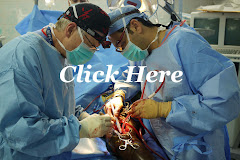The post below was authored by Kevin Nessari, a PGY-3 Anesthesiology Resident at Loma Linda University who spent 2wks volunteering in Haiti last month.
The anesthesia experience is unique and requires the constant ability to adapt to a disorganized system. The patients are very grateful and the Haitian staff will do their best to help you if you try to get them involved.
Practical:
- NPO may not actually mean NPO. I learned this the hard way…
- The translators are great for helping you with a preop assessment.
- Depending on the staff the PACU quality varies greatly.
- Anesthetic records come with the charts but are very basic.
- No temperature or C02 sensors are available in the OR.
- If a patient does not bring blood with them it will take about 4hrs for the family to go get it but the availability of the correct type is not for certain.
- Basic labs are available pre-op if needed as well as EKG and CXR.
- Work hours vary but be ready to work a few long shifts if you are the only provider there at night. Usually enough anesthesia staff will be available during the day to run 3 rooms.
- Be flexible (see pic below).
Supplies:
- Most medicines are available with a few exceptions.
- Supplies of fentanyl, succinylcholine, and antihypertensives are low.
- Epi, atropine, ephedrine and phenylephrine are available but other pressors are hard to come by.
- I couldn’t find any dantrolene.
- Lots of spinal/epidural local and regional local was available but may decrease soon as it is being used heavily.
Equipment:
- There is a nerve stimulator and a few needles are available but I only found the 100mm variety.
- There is a syringe infusion pump but the number of 60cc syringes is low.
- Plenty of adult ET tubes, pediatric sizes are few, pediatric blades are hard to find but available.
- There are a lot of broken blades and handles so having a spare set would not hurt.
- LMA’s are available, but the supply of #4’s is decreasing.
- No warming devices or warm blankets are available.
- 3 OR rooms, 3 anesthesia machines of which none work well i.e. leaks and broken ventilator.
- It is safe to bag the patient on each machine, I made sure all patients that required GA were breathing on their own as quickly as possible.
- One i-STAT machine is available in the hospital.
- Sterile drapes for spinals/regional are hard to come by.
- Electrical supply runs through a standard US type socket.
I hope this helps and good luck!









No comments:
Post a Comment